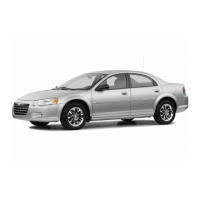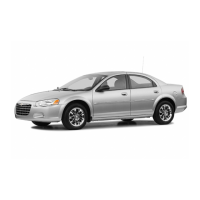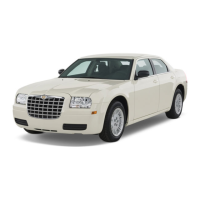ANTILOCK BRAKE SYSTEM
TABLE OF CONTENTS
page page
DESCRIPTION AND OPERATION
ANTILOCK BRAKE SYSTEM ................55
ANTILOCK BRAKE SYSTEM COMPONENTS....56
TRACTION CONTROL SYSTEM..............60
HYDRAULIC CIRCUITS AND VALVE
OPERATION ...........................60
DIAGNOSIS AND TESTING
SERVICE WARNINGS AND CAUTIONS ........63
ABS GENERAL DIAGNOSTICS INFORMATION . . 64
ABS WIRING DIAGRAM INFORMATION........64
ABS VEHICLE TEST DRIVE .................64
ABS ELECTRONIC DIAGNOSIS ..............66
TONE WHEEL ...........................67
BRAKE FLUID CONTAMINATION .............67
SERVICE PROCEDURES
BRAKE FLUID LEVEL CHECKING ............68
ANTILOCK BRAKE SYSTEM BLEEDING .......68
REMOVAL AND INSTALLATION
SERVICE WARNINGS AND CAUTIONS ........68
INTEGRATED CONTROL UNIT...............69
WHEEL SPEED SENSOR (FRONT) ...........71
WHEEL SPEED SENSOR (REAR) ............72
DISASSEMBLY AND ASSEMBLY
INTEGRATED CONTROL UNIT...............73
SPECIFICATIONS
TONE WHEEL RUNOUT....................74
WHEEL SPEED SENSOR-TO-TONE WHEEL
CLEARANCE...........................74
WHEEL SPEED SENSOR RESISTANCE .......74
BRAKE FASTENER TORQUE
SPECIFICATIONS .......................74
DESCRIPTION AND OPERATION
ANTILOCK BRAKE SYSTEM
DESCRIPTION
This section covers the physical and operational
descriptions and the on-car service procedures for the
Mark 20i Antilock Brake System and the Mark 20i
Antilock Brake System with traction control.
The purpose of the antilock brake system (ABS) is
to prevent wheel lockup under braking conditions on
virtually any type of road surface. Antilock braking is
desirable because a vehicle that is stopped without
locking the wheels retains directional stability and
some steering capability. This allows the driver to
retain greater control of the vehicle during braking.
OPERATION
There are a few performance characteristics of the
Mark 20i Antilock Brake System that may at first
seem abnormal, but in fact are normal. These char-
acteristics are described below.
NORMAL BRAKING
Under normal braking conditions, the ABS func-
tions the same as a standard base brake system with
a diagonally split master cylinder and conventional
vacuum assist.
ABS BRAKING
ABS operation is available at all vehicle speeds
above 3–5 mph. If a wheel locking tendency is
detected during a brake application, the brake sys-
tem enters the ABS mode. During ABS braking,
hydraulic pressure in the four wheel circuits is mod-
ulated to prevent any wheel from locking. Each
wheel circuit is designed with a set of electric sole-
noids to allow modulation and each wheel receives its
own separate electrical signal. Wheel lockup may be
perceived at the very end of an ABS stop and is con-
sidered normal.
During an ABS stop, the brakes hydraulic system
is still diagonally split. However, the brake system
pressure is further split into four control channels.
During antilock operation of the vehicle’s brake sys-
tem, the front wheels are controlled independently
and are on two separate control channels, and the
rear wheels of the vehicle are controlled together.
The system can build and release pressure at each
wheel, depending on signals generated by the wheel
speed sensors (WSS) at each wheel and received at
the controller antilock brake (CAB).
NOISE AND BRAKE PEDAL FEEL
During ABS braking, some brake pedal movement
may be felt. In addition, ABS braking will create
ticking, popping, or groaning noises heard by the
driver. This is normal and is due to pressurized fluid
being transferred between the master cylinder and
the brakes. If ABS operation occurs during hard
braking, some pulsation may be felt in the vehicle
LH BRAKES 5 - 55

